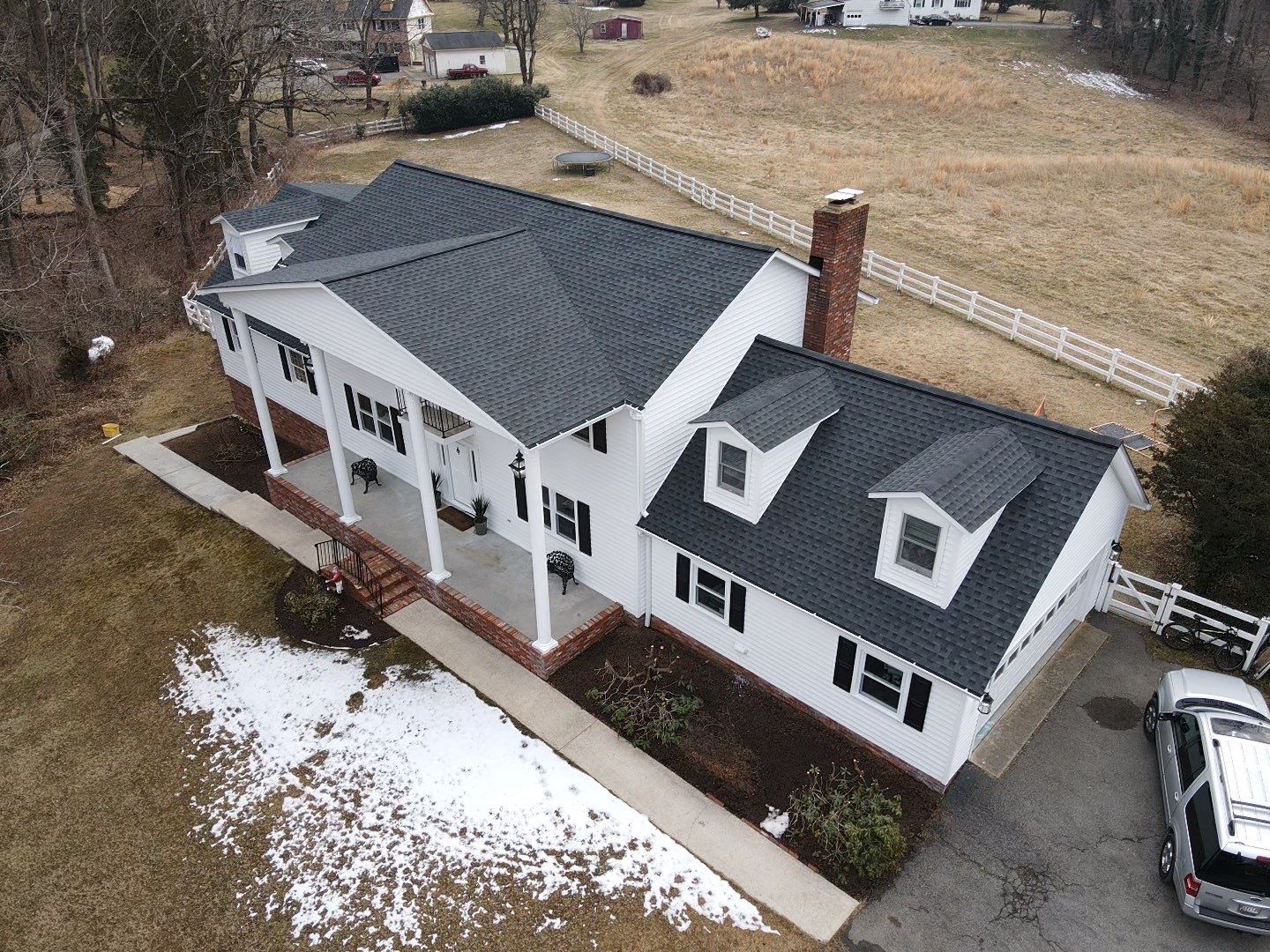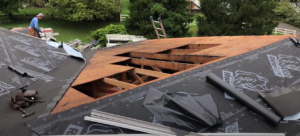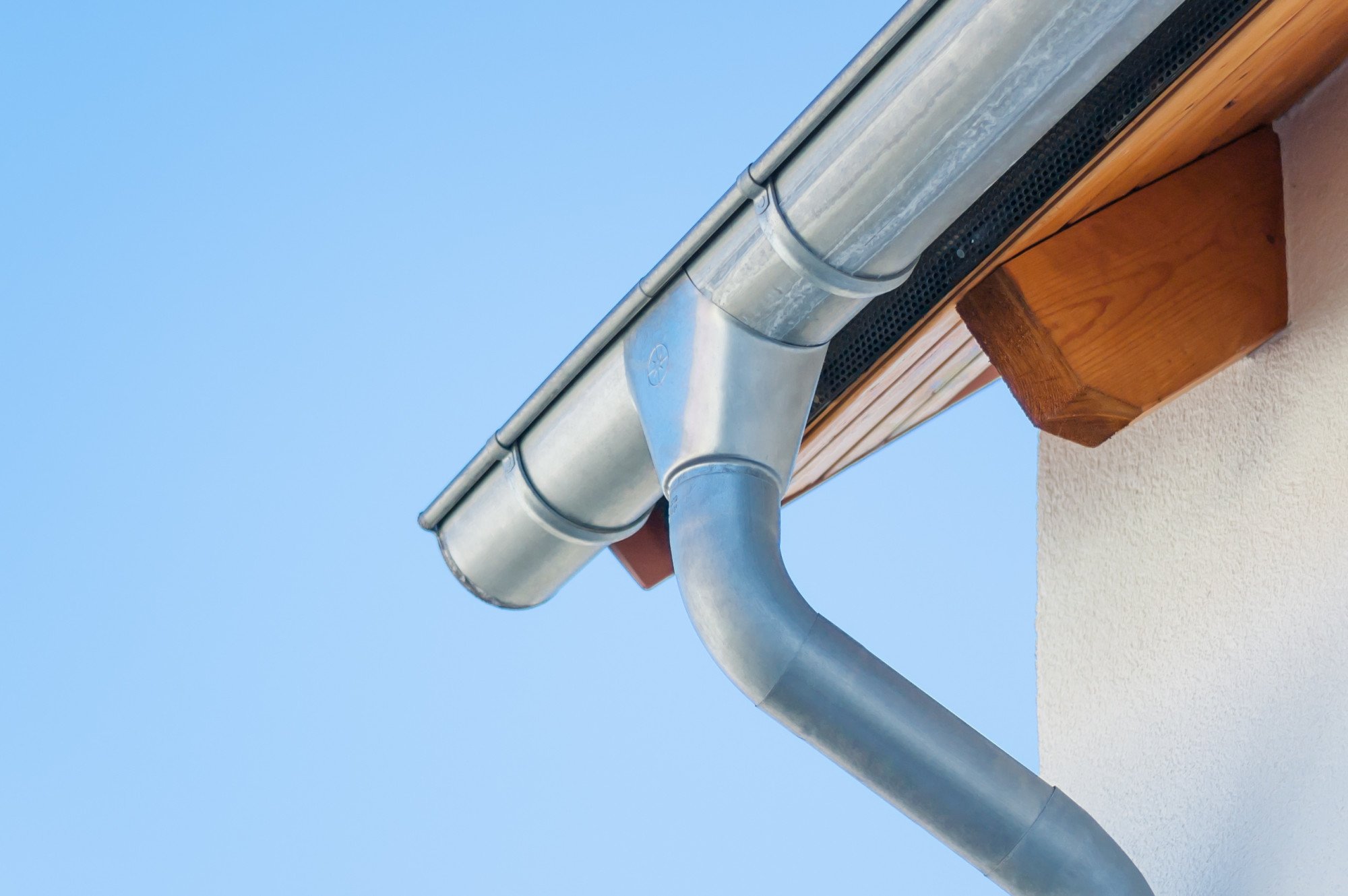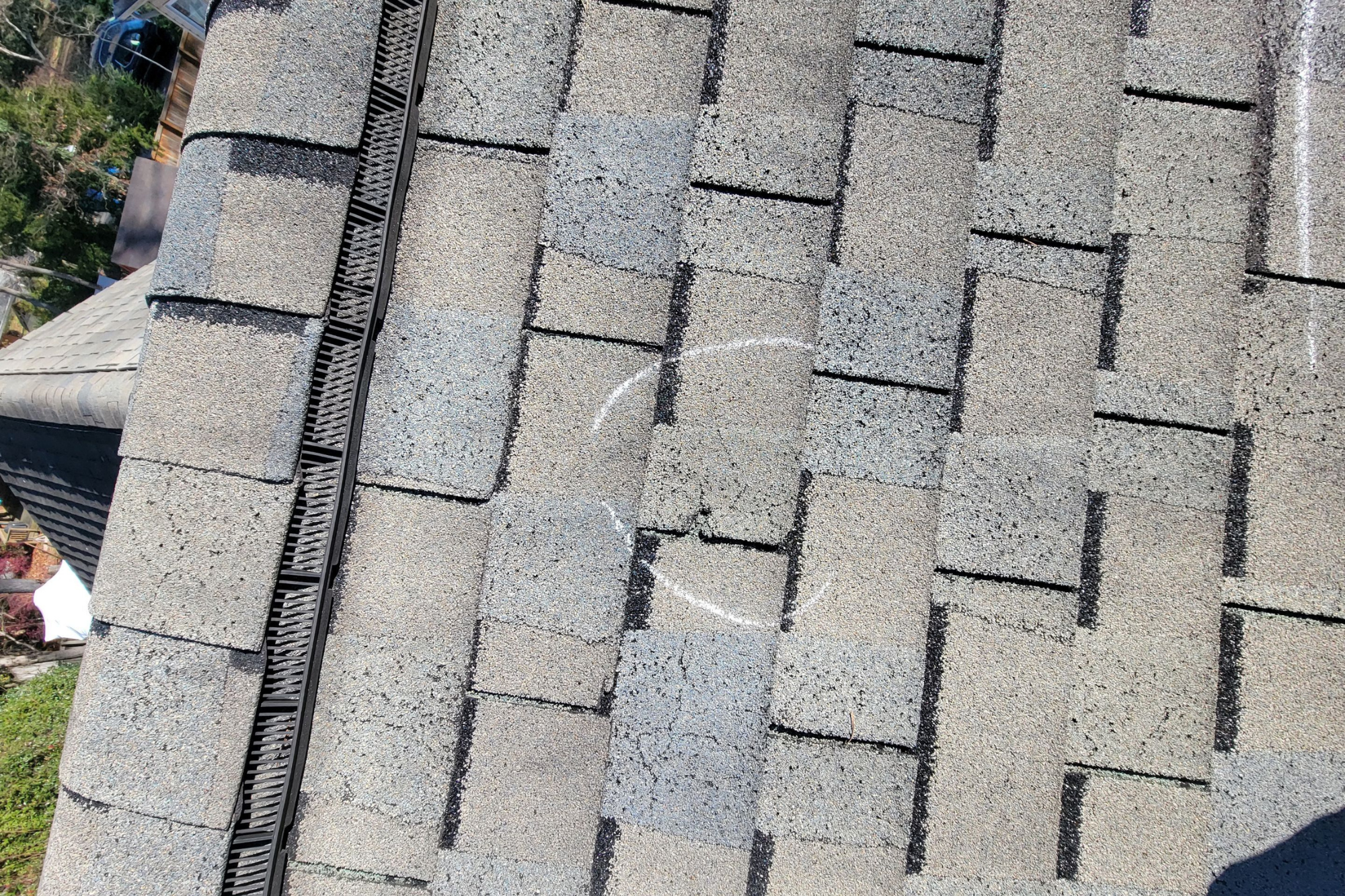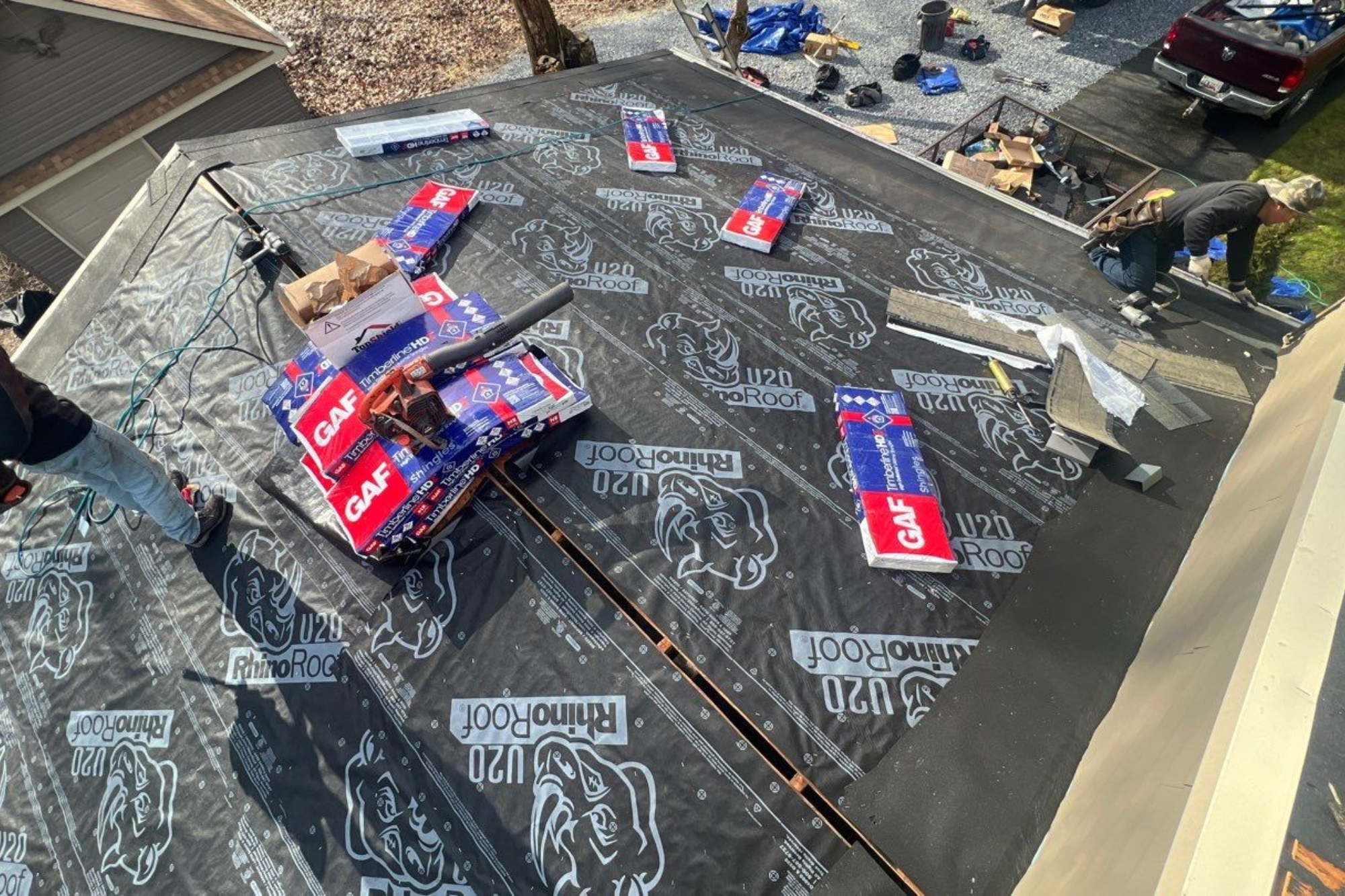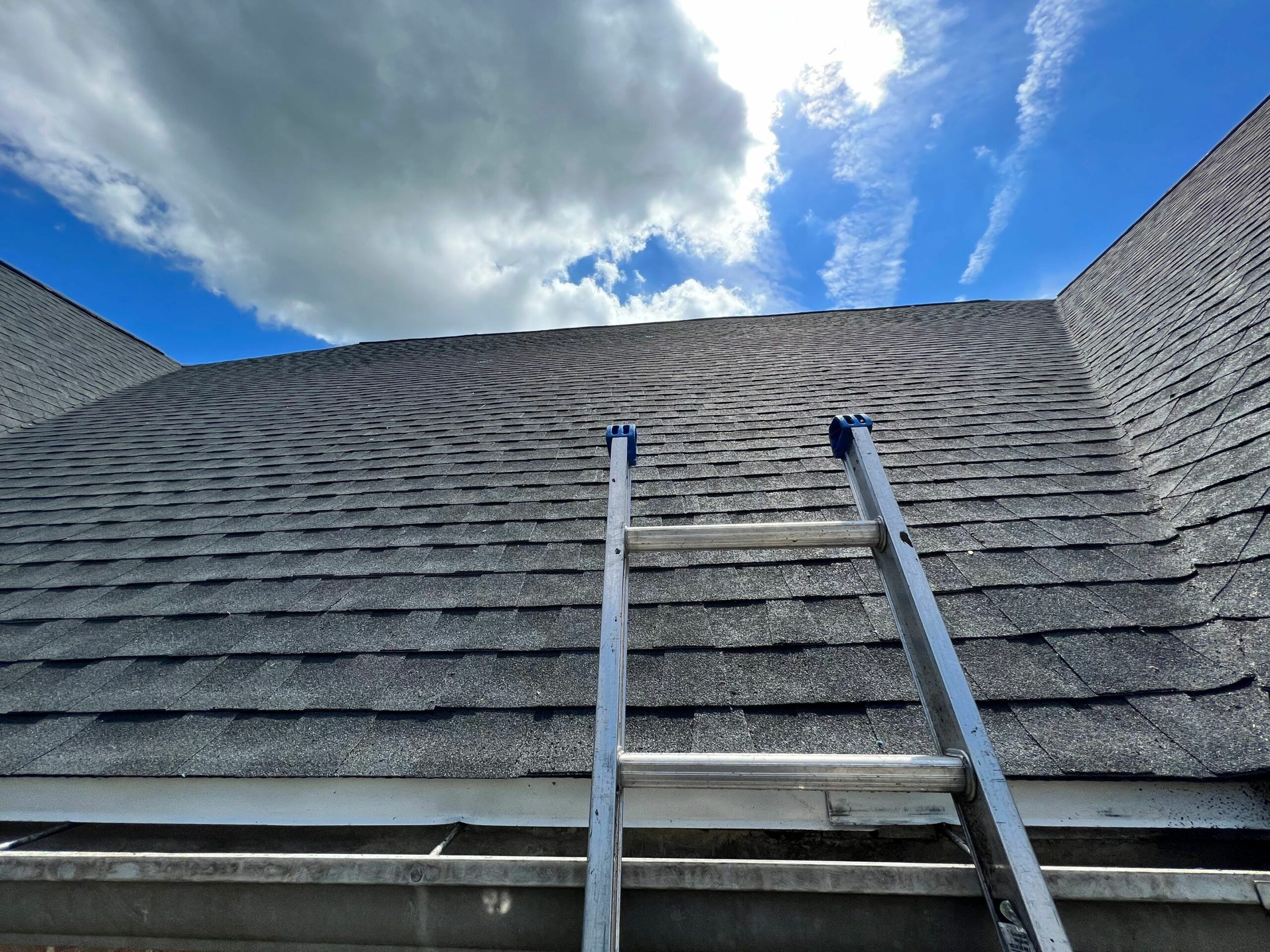Most roofs are designed to be replaced every 30 years, on average. In an ideal world, this would happen. However, in the real world, there are countless things that can wreck your roof, requiring extensive repairs or an entire replacement long before the three-decade mark.
Storm damage is a common reason Americans have to spend on roof repair or replacement. Regardless of where you live in the country, it’s likely that you’ve encountered your fair share of violent storms at some point. But even if you haven’t, it helps to prepare for this rough weather.
In this comprehensive checklist, we give you all the information you need to deal with roof damage from storms.
Types of Roof Storm Damage
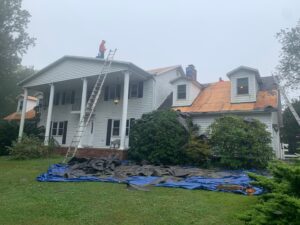 During a storm, there are various agents that can cause roof damage. Here we look at some of them.
During a storm, there are various agents that can cause roof damage. Here we look at some of them.
Wind
Hurricane-force winds traveling at high speeds can cause severe damage to your home’s roof. These winds can tear or remove shingles, exposing the roof deck, underlayment for waterproofing material to the elements.
Gale-force winds, which are slower than hurricane-force winds, can also cause visible dents to your roof. Sharp, sudden gusts of wind lift up or curl the shingles, leaving the roof vulnerable to wind-driven rain.
Hail
Hail storms rarely last longer than a quarter of an hour. During that time, however, hailstones can cause visible dents and pockmarks in your roof. They can knock your shingle granules loose, requiring immediate roof repair.
Standing Water
The issue of standing water after a rainstorm is common in roofs that do not have proper drainage. It’s one of the top signs of a damaged roof, and you need to take action urgently.
Sometimes, the issue is caused by clogged gutters. Rainwater backs up under the shingles, allowing moisture to seep into the roof deck or the underlayment.
Debris
During a severe storm, debris can be hurled onto your roof. Anything from small tree branches to much larger tree limbs can impact your roof’s surface and dent it, leaving your roof vulnerable to intrusion by moisture.
What to Check After a Storm
Once the storm has passed, it’s time to examine your roof to determine the type and extent of damage you’re looking at. Here’s a checklist for you to follow.
Start With the Protruding Roof Parts
Check the chimneys, skylights, and other protruding roof parts for damage. Typically, such parts are covered with flashing and are sealed to avert water leaks into the seams.
If the flashing or seals seem damaged or compromised, you’ll need to take action. Leaving the problem unattended can lead to water leaks.
Inspect the Exterior Shingles
Roof damage after a storm is most evident on the shingles, as they serve as your home’s first line of defense against harsh weather. Check for granule loss, curling, and cracking of shingles. Some shingles might also be missing.
When checking the damage, avoid setting foot on the roof to do so. The best way to go about it is to use a pair of binoculars and inspect the roof from the ground. Alternatively, hire a roofing contractor to inspect the roof for you.
Examine the Roof Vents
Some homeowners think that storm damage to the roof’s soffit and fascia is superficial and nothing to be concerned about. Nothing could be further from the truth.
Damage to these two parts can interfere with your home’s ventilation system. Once your vents are warped or otherwise damaged, the air they draw into your indoors is compromised. That’s why vents should be part of your roof storm damage checklist.
Inspect the Gutters
The gutter system of your roof diverts rainwater away from your house during a storm. When gutters get clogged, water backs up under your shingles and can start to leak to areas where it shouldn’t, including the attic.
Gutters can become clogged during a storm that hurls leaves, twigs, and other debris on your roof and directs the debris to the gutters. Forceful storms can even cause the gutter system to detach from the roof.
Inspect these gutters following the storm to see whether they’re still in good shape or need repair.
Check the Attic and Ceilings
If your roof seems relatively undamaged on the exterior, check the attic and ceiling for signs of water spots. Hail and wind can cause invisible leaks that cause more significant issues later. Use a flashlight to check for any leaks, and take appropriate action if you see them.
What to Do if Your Roof Has Storm Damage
So you’ve carefully checked your roof and spotted signs of storm damage. What’s your next move?
Make Temporary Fixes to Reduce Property Damage
Is the damage in an area that’s directly above your living space? Place a bucket under the leaks to avert damage to interior property. It’s also wise to move any valuables that may be damaged further as a result of the roof damage.
You may also need to waterproof severe damage quickly using strapped tarping.
Contact the Insurance Company
While most insurance companies will not pay for a roof that needs to be replaced because it is worn out, they will cover a replacement if damage was caused by a storm, fire, or other natural disaster. A lot of storm damage may not be visible from the ground, but will lead to a shortened life expectancy for your roof. If you suspect even the slightest bit of storm damage, you should contact the insurance company immediately. If you wait too long, they may claim the roof has just reached its life expectancy, whether it is due to old storm damage or not.
Many insurance companies are now adjusting claims virtually, so it is vital to have a reputable contractor like Landmark to document and present all of the property damage to the insurance company properly. We know the insurance claims process can be frustrating to deal with, which is why we have an ex-adjuster on staff to guide you through the process and eliminate the frustration.
Talk to a Reliable Roofing Contractor
Sometimes, it makes more sense to hire a private roofing contractor to fix your roof after storm damage.
The thing to remember when hiring a roofing contractor is to go for one with the appropriate credentials. Ideally, you want to work with a certified contractor with a proven track record of doing a great job.
Beware of storm chasers who flock to areas that get hit by a storm to offer repair services. In most cases, these contractors provide substandard workmanship.
Take the Right Action After Storm Damage
When a storm hits your area, you need to inspect your roof for possible storm damage. Once you spot any evidence of damage to your roof, have the issue addressed right away by a qualified roofing contractor.
Are you interested in reliable roofing services? Please contact Landmark Roofing by calling 443-214-2533 or sending us an email today!
Contact Us
After starting his first business at age 26, Artie Hendricks partnered with his best friend Rob Calhan and they have assembled a team of skilled and conscientious friends to be the core of Landmark Roofing. He largely credits his father’s strong and consistent work ethic and his father’s best friend Jerry, who owns a construction company and trained him through his first building experiences. Artie has since advanced through degrees in architecture, auto-CAD and construction management to build a business that prides itself on the care it shows for its work and its customers’ satisfaction.

